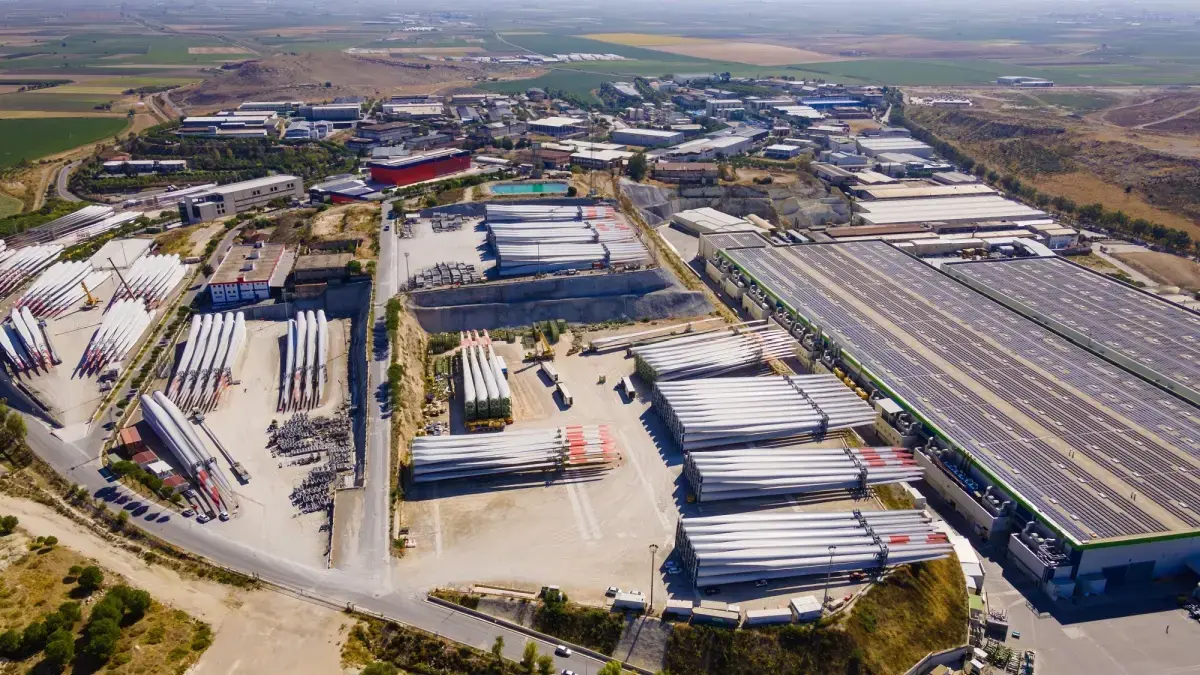China is innovating with solutions for the recycling of wind turbine blades, a challenge due to their composition of glass fiber and epoxy resin. By using physical size reduction techniques and chemical treatments, the goal is to transform this waste into resources for construction. The test on Qingfu Road, crack-free after five months, demonstrates the positive environmental impact and supports the country’s climate-neutral objectives.
Key Information
- Chinese innovation: recycling of wind turbine blades.
- Recycling issue: difficult to process due to their composition.
- Goal: converting waste into construction materials.
- Environmental impact: supporting the clean energy agenda.
Chinese Innovation
China is showing remarkable innovation in recycling, focusing on a major environmental challenge: processing used wind turbine blades. These structures, while essential for renewable energy production, pose a recycling problem due to their composition of glass fiber and epoxy resin, materials that are notorious for being difficult to recycle efficiently.
Recycling Issue
Wind turbine blades, often regarded as impossible to process, have become a critical environmental issue. Their manufacturing from robust composites makes them particularly challenging waste materials to break down, raising concerns about their ecological impact. This situation has highlighted the urgency of finding sustainable solutions to convert this waste into useful resources.
Goal
The goal of this initiative is to convert waste from wind turbine blades into valuable resources for construction. By reusing these materials, China aims not only to reduce the amount of waste sent to landfills but also to make an innovative contribution to the manufacture of construction materials, thereby meeting the growing demand for sustainable and ecological equipment.
Belgian Researchers Make an “Invaluable” Discovery That Could Lead Them to the Nobel Prize
Method
To achieve this goal, a method of physical size reduction and chemical treatments has been implemented. This process allows for the reduction of the blades into fine particles, making them easier to incorporate into other materials. These innovative techniques ensure that the new products maintain robust mechanical properties and are suitable for use in various projects, making recycling a true opportunity for innovation.
Applications
The applications of this recycling method are numerous and promise to redefine construction standards. In particular, the recycled materials are used for incorporation into cement and asphalt mixtures. This results in stronger and more durable roads, contributing to the sustainability of urban infrastructures. This integration into construction demonstrates that waste, when properly processed, can play a crucial role in contemporary projects.
Successful Test
A concrete example of this initiative is the paving of Qingfu Road, recently completed using recycled materials sourced from wind turbines. This project has undergone rigorous testing and delivered encouraging results, remaining crack-free after five months of use, showcasing the effectiveness of this sustainable approach under real-world conditions.
Environmental Impact
This recycling project also has a positive environmental impact. By integrating wind turbine waste into construction applications, China supports its clean energy agenda, contributing to the reduction of carbon emissions and directly benefiting from the ecological advantages of reusing materials. Utilizing waste as a significant resource demonstrates a commitment to a circular economy.
Partnership
The success of this innovation is also the result of a partnership between construction companies and research institutions. This multidisciplinary collaboration enables the pooling of expertise and accelerates research into sustainable materials, fostering quicker and more effective advancements in the recycling of wind turbine blades.
Future Vision
Looking to the future, the vision is clear: transform the wind energy sector into a source of useful materials for other industries. This approach could pave the way for innovative solutions that not only address the waste problem but also strengthen sustainability across various fields. Continued research into effective recycling methods is essential to realize this vision.
Long-term Goal
Finally, the long-term goal of this promising initiative is to contribute to achieving China’s climate-neutral objectives. By integrating the recycling of wind turbine blades into construction practices, China not only leads the way but could also set a model for other countries seeking sustainable practices and wanting to reduce their carbon footprint.

